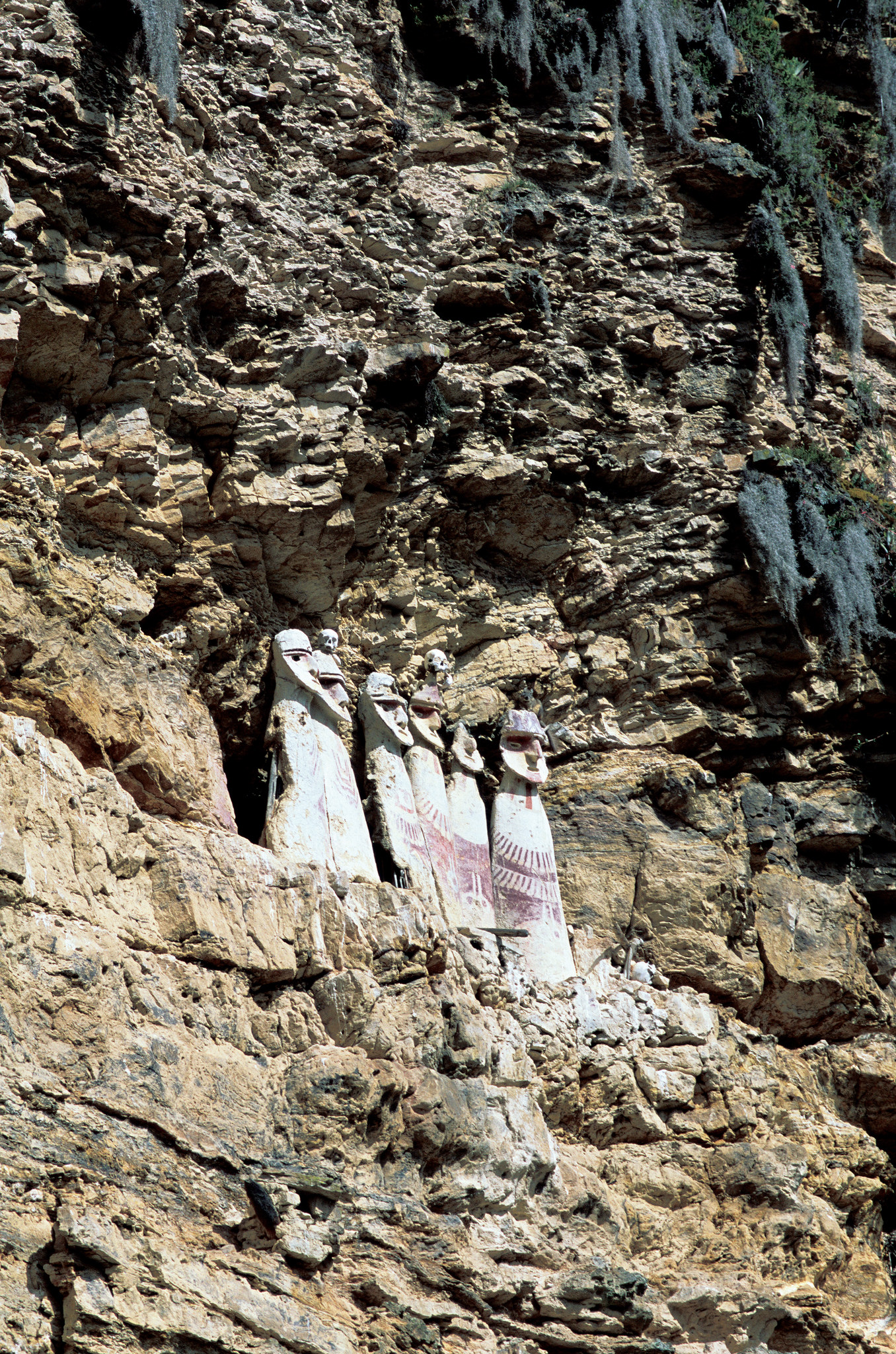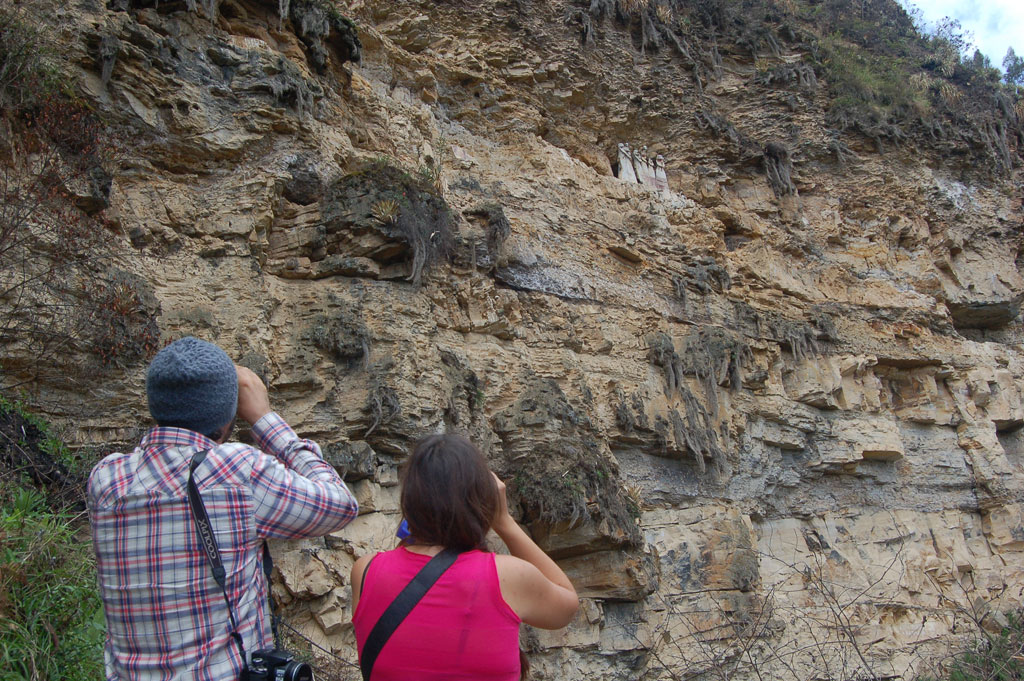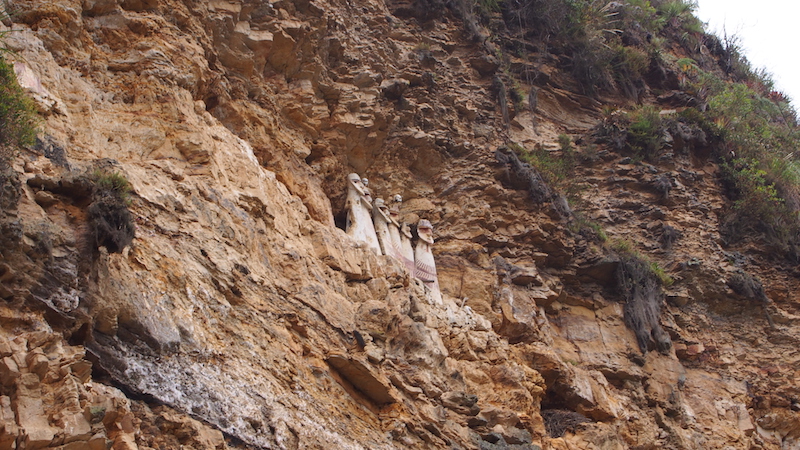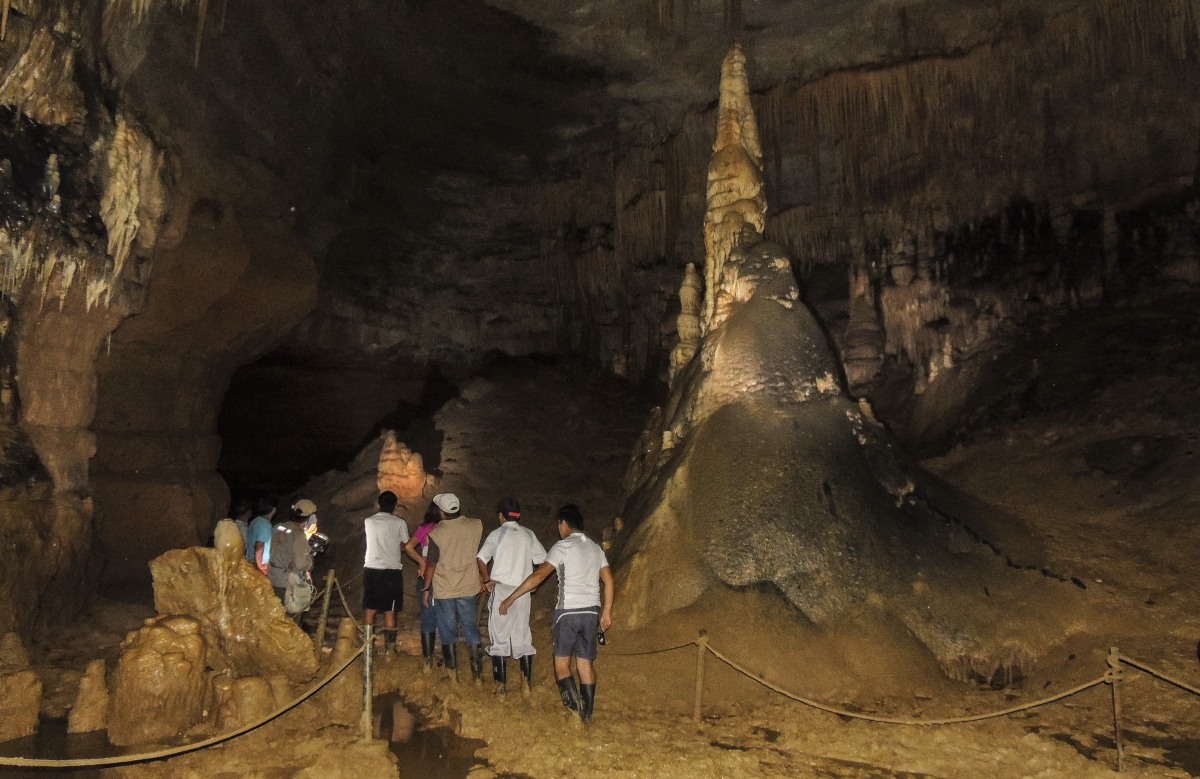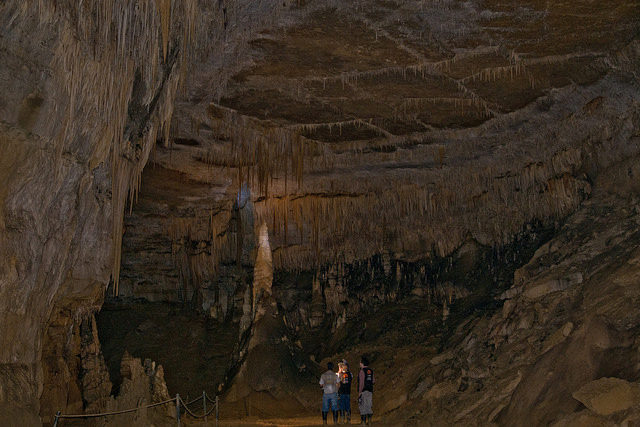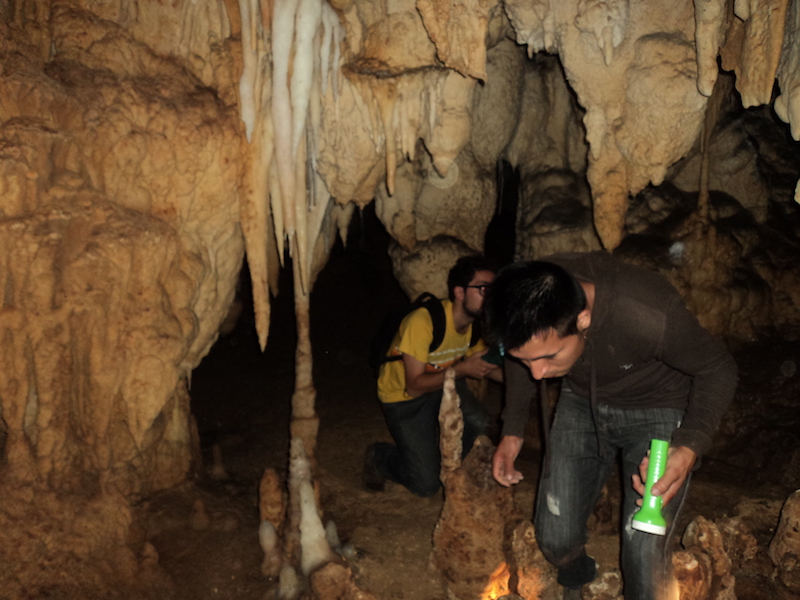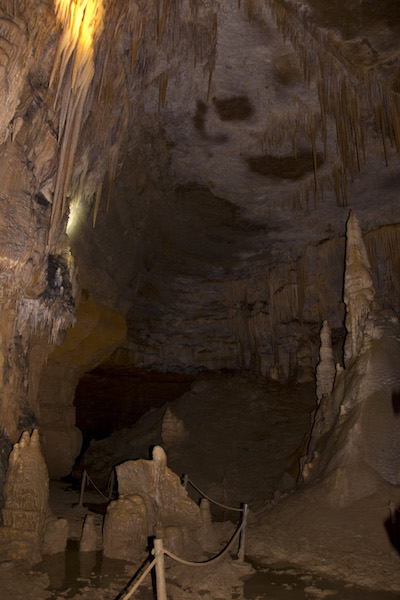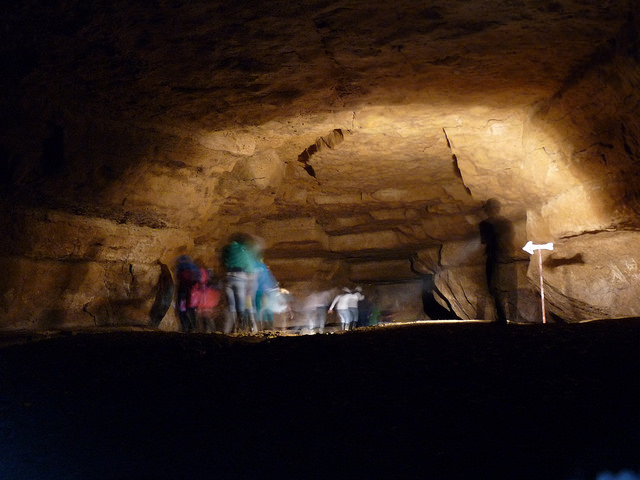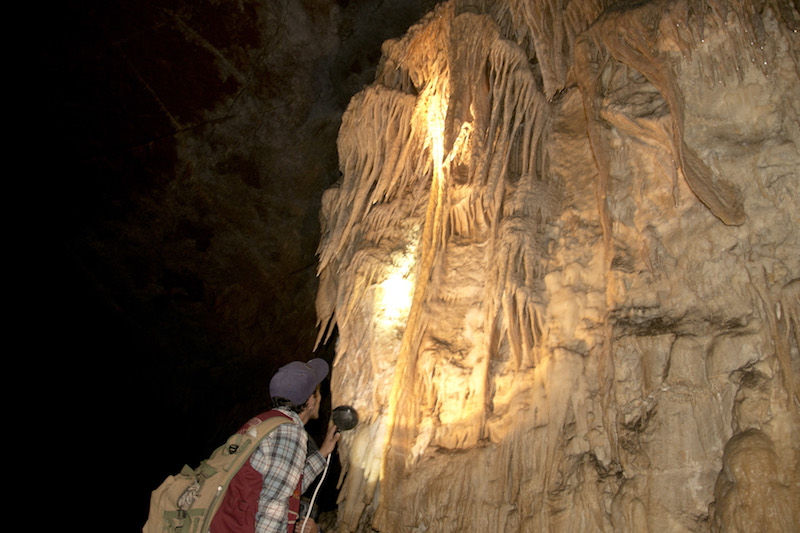A Guide To Karajia
Karajia (sometimes spelt Carajia), located 48 km (30 miles) northwest of Chachapoyas at an altitude of 2,702 m (8,865 ft), is known for the larger-than-life-sized sarcophagi which were sometimes the final resting places of Chachapoya nobility.
Here, standing upright, up to 2.5 m (8 ft) tall, they are bullet-shaped structures made of mud, wood, and straw, topped with an oversized head, colourfully painted, and placed in ledges high on cliffs.
Characteristically, each sarcophagus has a face painted to look out over the valley below.
Inside, there were mummies and offerings, long since removed by looters and archaeologists, but the sarcophagi remain, eerily staring out into the distance.
The Chachapoya always buried their important dead high up, in difficult to access locations, looking towards the rising sun or a village, and close to water.
The remoteness of the location meant that it was not until 1985 that an excursion led by Federico Kauffmann Doig was successful in finding the Karajia sarcophagi.
It it thought that the sarcophagi of Karajia contained the highest officials from the fortress of Kuelap.
Archaeologists believe that the characters with a skull on their head were warriors; while the symbols on one of the sarcophagi points to one of them being a woman.
There are also less elaborate, smaller sarcophagi - containing lesser dignitaries - in the area ... along with numerous other ruins.
How to Visit Karajia:
Along with the fortress of Kuelap, the sarcophagi of Karajia are a real highlight of the Chachapoyas region and so included in the below PeruNorth itineraries.
Please note that it is a long drive - more than two hours, on some unpaved roads - to get to Cruzpata, from where one goes on foot - or can rent a horse - to reach the Karajia viewpoint.
What our clients say about Karajia:
“The visit to Karajia was marred by heavy rain, but it was good to view the tombs.
Our driver even stopped at a river running over the road so we could clean the mud off our boots & even went out of his way to help us. Very courteous. ”
Included in some visits to Karajia is a short detour to Quiocta Caves, a series of subterranean chambers, descending 545 m (1,788 ft) underground, that were also used by the Chachapoya culture as a burial site.
As well as ancient bones - and many bats and their guano! - the seven caverns have very impressive stalactite and stalagmite formations, created by the flow of water through the limestone rock in this part of the Andes Mountains.
Seeing the weird and wonderful shapes created by Nature, it is not hard to see why the Chachapoya considered the place to be sacred.
It is advisable to bring a good head torch, as there is no electric light in the caves; Wellington boots can be rented at the entrance.


